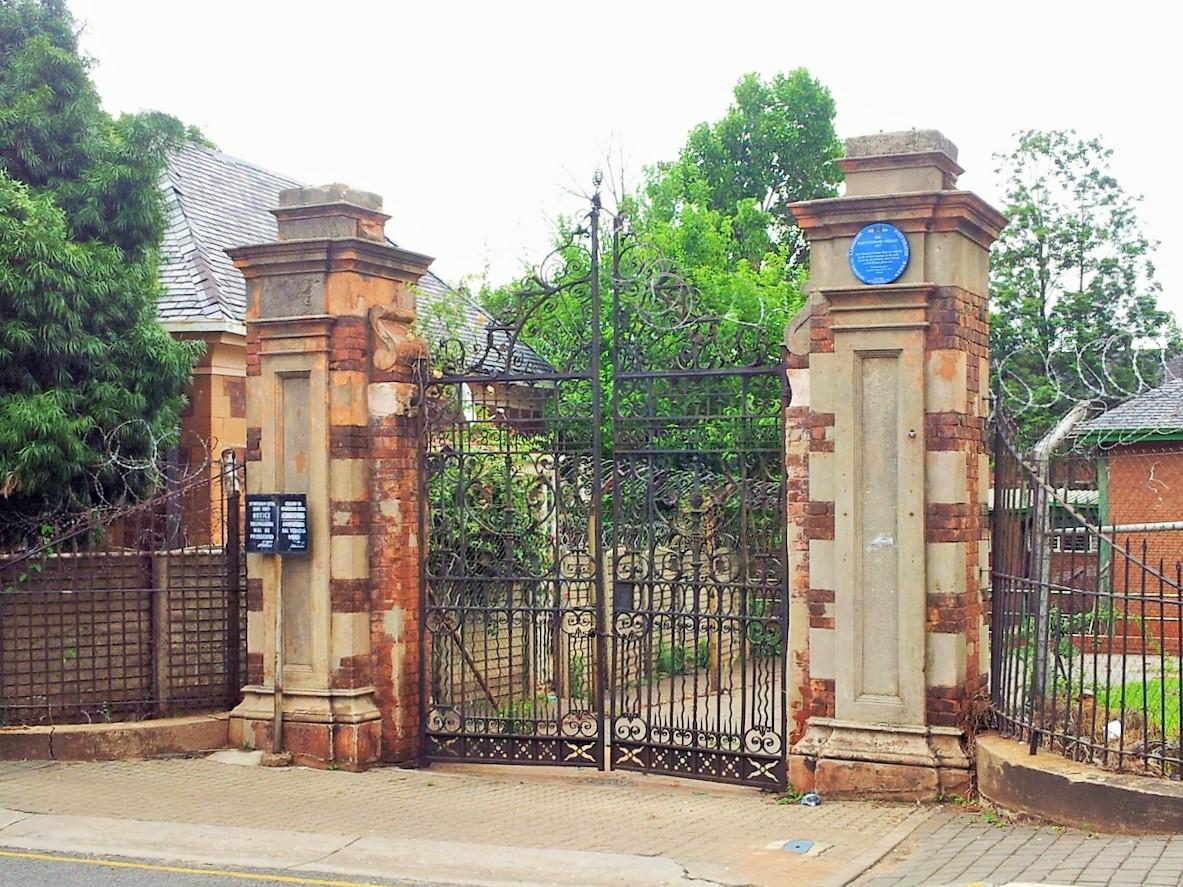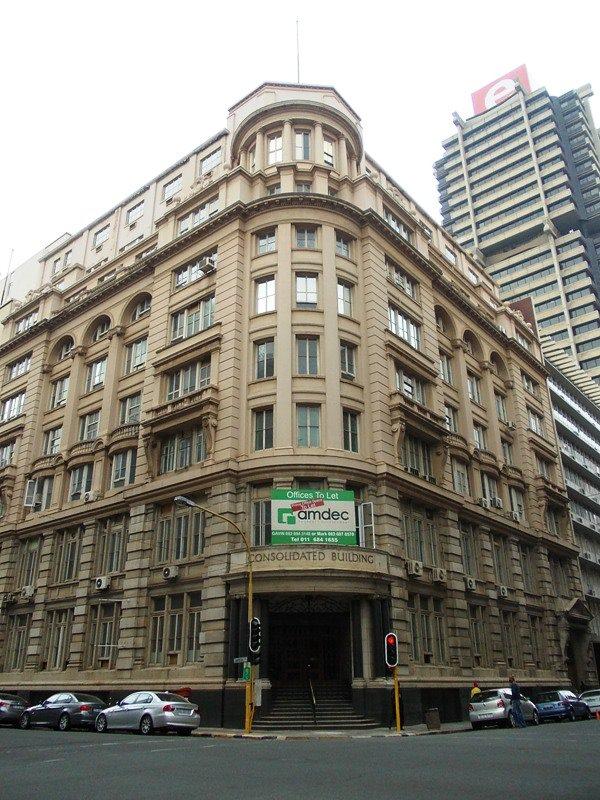Richard Lewinsohn, Barney Barnato from Whitechapel Clown to Diamond King, Routledge, London, 1937, 275 pages, 8 illustrations, hardcover
I grew up knowing a little about Barney Barnato as I attended Johannesburg Girls High School, colloquially and fondly known as Barnato Park, as the school was situated on his Berea estate named, Barnato Park. The grand mansion he had built though never lived in was the boarding establishment, Joel House (demolished at the end of 1962). The property is still a school, Barnato Park High School, though now a coeducational high school serving Hillbrow's local children. Barnato is remembered in the wrought iron gates and entrance lodge that survives on Barnato Street. Streets of Berea, such as Lily, Doris, Beatrice Lane and Joel, recall Barnato family members. At Wits University there is a fine residence on the West Campus, Barnato Hall, donated by the mining house, established by Barnato, Johannesburg Consolidated Investment Company and so named to honour their founder.
Barnato Park Gates (The Heritage Portal)
In recent years, under a regime of fraudulent asset stripping, JCI, once one of the great mining and investment firms of Johannesburg, has not fared well and ended its life split into component parts. It is remarkable for a company to survive a hundred years and the company history is recorded in Ivor Saunders book. Barnato has been compared to Brett Kebble because of the JCI connection, the one created the mining house and the other ruined it. Both died young, in their forties, and in unnatural circumstances.
The other figure that bears comparison to Barnato is Cecil John Rhodes, his contemporary and also the founder of a mining house, Goldfields. However, Barnato's reputation and imprint on history has survived rather better than his great protagonist, rival and contemporary Rhodes.
Why should this be the case? There are no statues to Barnato to give rise to a "Barnato must fall hashtag". Barnato Hall remains in place at Wits. I decided to go in search of Barnato to get a sense of the man by returning to one of the earliest biographies on Barnato, published in 1937 by Richard Lewinsohn.
There had been an earlier memoir of Barnato by Harry Raymond, published in 1897 shortly after his death, but I am still in search of that volume [Kathy has since found the book in her vast collection!]. Lewinsohn's book is fascinating because it was originally published in French and then translated by Geoffrey Sainsbury.
There are two strengths of the Lewinsohn book. Firstly, it turns well researched facts about Barnato's life into an easily read and fluid biography. It recounts the adventurous life of the man who progressed from "Whitechapel Clown" (a barrow boy, boxer and theatre figure of the East End of London) to "Diamond King" (the successful businessman and diamond merchant of Kimberley). A key appeal is the rags to riches theme. The book captures the personality of Barnato, very much an ebullient character, a risk taker, a generous man, a family man who kept to his Jewish faith. He was a people's person who could read character. He was a rough diamond! Secondly, the book has an invaluable bibliography, listing some 59 books and hence relating Barnato to his contemporaries and enabling Lewinsohn to give the political context for the life of Barnato a comprehensive but light touch. There is also an index but there are no footnotes to give precise sources, hence the book is popular and not scholarly.
Barnato was born Barnett Isaacs (1851-97) who started his working life at 14 in his father's shop in Petticoat Lane. London. Barnato was a stage name. He was intelligent but ill-educated; he was adventurous and possessed physical courage. He followed his older brother, Harry, to Africa to seek his fortune on the diamond fields. He had a meteoric rise from itinerant trader and small diamond merchant to being the owner of claims and then learning that the essence of capitalism lay in company formation, access to finance and share dealing. Barnato moved from taking small risks to making calculated investment decisions with long term consequences. His success depended on both luck and astute judgement. Barnato was the first to understand the diamond finding prospects of the blue ground. Like Rhodes he came to understand the nature of the diamond trade and the significance of controls over supplies and hence monopoly which then gave the leverage to influence and then control price. The days of digging a big hole soon passed and scientific mining took over.
The story of financial brinkmanship, negotiation, vulnerabilities and secret desires that shaped the ambitions of Barnato and Rhodes is well told and hence the emergence of the De Beers Consolidated Mines. Barnato wanted to mine diamonds, Rhodes wanted to conquer Africa, build a railway from Cape to Cairo and had an imperial dream and diamonds were simply the vehicle for success. For Barnato joining the snooty Kimberley Club and becoming the Kimberley member of the Cape Parliament lured him into the Rhodes orbit. Barnato emerged as a man who enjoyed his new found wealth, spent lavishly and put down roots in South Africa. His primary interests were in sports, money and horse racing.
Photos in the book - Queen's Hotel and The Diamond Market
Three quarters of the Lewinsohn book is about Barnato in Kimberley, and these Kimberley chapters add up to an easy and charming read. There are only two chapters to gold exploration and life in early Johannesburg. Barnato established a good relationship with President Kruger and it was Barnato who presented Kruger with the pair of decorative stone lions still to be seen at the entrance to Kruger's house on Church Street, Pretoria. Here one can think about possible parallels with Sammy Marks as an early Transvaal entrepreneur, but Lewinsohn excludes Marks from his tale.
The Johannesburg years of Barney Barnato were a short nine years. He only arrived in Johannesburg in late 1888. They were busy years of the founding of JCI, taking control of the Stock Exchange, purchasing mining properties and, most fascinating, applying the principles of monopoly to the local supply of water and hence the formation of the Johannesburg Water Works Company. Gold did not lend itself to monopoly but monopsonistic practices developed. Barnato survived the change in mining technology and the shift from outcrop to deep level pyritic ore mining, and then the stock market crash of 1895. Lewinsohn places great emphasis on Barnato's role in the Jameson Raid. Barnato was not a member of the Reform committee or a plotter but was the man who persuaded Kruger to commute the death sentences imposed on Frank Rhodes (Cecil's brother), Lionel Phillips, George Farrar and Hayes Hammond and instead levy large lucrative fines. Barnato's arguments were about the hard economics of mining and the delicate relationship of Uitlander mining finance and ZAR politics.
Consolidated Building circa 2012 (The Heritage Portal)
Sadly, Barnato's life ended prematurely when a year later (June 1897) he fell overboard and drowned. He was traveling on the ship "The Scot". The inquest at Southampton recorded the verdict "Barnett Isaacs Barnato, aged forty-four, death by drowning while temporarily insane". Lewinsohn ends his story at that point and does not enter the debate about whether Barnato's unnatural death was murder or suicide. All round this was a sympathetic favourable biography (the author fell under the spell of his subject) and covered the company histories in a superficial manner though he touches on some essential figures.
Of course the next question to ask is who was Lewinsohn and why was he interested in Barnato? Here I came up with some quirky connections. Richard Lewinsohn (1898-1968) was a journalist and professional writer who had a broad spread of interests. He was a German Jew who escaped Hitler's Germany and fled from France in the late 1930s after the Barnato biography was published. In the same year (1937) as the Barnato book appeared he also published a much better known book, A History of Sexual Customs under the pseudonym, "Mores". He was also interested in the great issues of his day, and wrote a classic book called, Financial Contagion: Lessons from the Great Depression and another of his titles was The Profits of War.
2016 Price Guide: the Lewinsohn 's book on Barnato is regarded as a collectible item of Africa and the international price comes in at $35 to 40. I spotted a poor copy of this book currently on Gumtree for sale at R350.
Kathy Munro is an Honorary Associate Professor in the School of Architecture and Planning at the University of the Witwatersrand. She enjoyed a long career as an academic and in management at Wits University. She trained as an economic historian. She is an enthusiastic book person and has built her own somewhat eclectic book collection over 40 years. Her interests cover Africana, Johannesburg history, history, art history, travel, business and banking histories.


